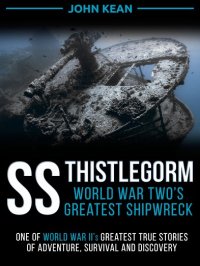The Numidia
The Numidia lies near the Big Brother island in Egypt’s south Red Sea.
Smashing British ships into Egyptian reef systems seems to have been something of a national sport around one hundred years ago when the Dunraven, the Carnatic and the Numidia all came out worse following collisions with these timeless ecosystems.
The ‘Brothers’, as they are known, are a remote reef system consisting of Big Brother and Small Brother islands, which are about 500 meters apart and around 40 kilometers from the nearest land. As far as Red Sea safari divers are concerned they are as remote as you can get and make for some spectacular diving. Big Brother is home to a lighthouse and its staff, a few small buildings and half a dozen cats with questionable pedigree.
At the turn of the last century, ships like the Numidia would use the Big Brother lighthouse to navigate having travelled through the Suez Canal. They would sail on down the Southern Red Sea out into the ocean. Numidia was heading for Calcutta, but she never made it.
The skipper was Captain John Craig who had been with the Anchor Line for over 35 years and a Master for 28 years. He had travelled the same route over 100 times and knew these seas well. On 19 July 1901, his new ship, the Numidia, weighed over 4,000 tonnes and had 97 hands on board. Once clear of the Suez Canal and approaching the Brothers he left control of the ship to the second officer, James Tulloch with instructions to steer her 27 degrees South, which should take Numidia over one mile westward of Big Brother Island. It was then that John Craig left the bridge after a gruelling 60-hour shift to get some sleep. It was 11pm.
The events that followed remain partly unknown but a court of enquiry noted that James Tulloch changed the course when he saw Big Brother bearing down fast. But what was he doing for the two hours previously when the lighthouse was in sight? It was suggested that he might have been sleeping at the wheel. Two lighthouse keepers watching the approaching ship said it made no sign of altering course until it was almost upon them. At the last minute he changed course to 22 degrees South. He could have easily awoken skipper John Craig and absolved himself of responsibility. It was too late.
The enquiry found the ship’s compasses to have been in perfect working order. There was a light fresh breeze that night but no mention was made of the currents that are now well known to divers. These currents can reach great speed and carry objects several miles in a short time. Was the Numidia a victim of them?
The Numidia lay stricken on the shallow reef for several weeks while attempts were made to re-float her. All of the crew and most of the cargo were safely removed. James Tulloch was largely held to blame and had his Officers Certificate suspended for nine months, although he could still work as a rating. John Craig received no punishment after the courts findings were that his instructions were given but not made good by James Tulloch.
The ship eventually broke in two and today stretches from the shallows down to over 80m deep. It is incredible to see that the ship hit the reef at its narrowest point of only twenty meters wide. A minor deviation on either side would have seen Numidia glide gracefully by avoiding doom. But then again, what fun would that be for wreck divers!
The Numidia is a vertical wreck now, so it is best to reach the maximum depth and multi-level your way back, taking in all the fine features from stern to bow.
Depths depend on your qualifications and experience. All diving here requires surface support because of strong currents and the potential to be swept off the reef. Only liveaboard boats can dive the Brothers and all vessels have RIB support. Recreational divers are unable to reach the prop at 80m but the stern mast base is nearer 40m by aft hold number three. There is much fine soft coral on the wreck, which thankfully, unlike other popular sites, has not suffered from inappropriate ‘tying on’ of lines.
The engine room is where you’ll see the steam cylinders and stairways leading to the lower areas and is definitely worth a visit. Much of the wreck is open and easy to swim around in near the light zones, but be aware of disorientation or veering off into dark and enclosed areas without proper training and equipment.
Apart from the bow, now broken and embedded in the shallow reef, the wreck as a whole is intact and in good condition considering the 108 years its been down there. Grey reef and occasionally thresher sharks can be seen at the deeper depths along with plenty of trevally and barracuda.
The Numidia is at the narrow North end of Big Brother where currents can be strong, so do your safety stop a little further around where you can ascend in calmer waters. In any event, it will be the RIB that is likely to pick you up. The golden rule in this area is to listen carefully to the briefing and be seen and heard on the surface.
FIRST PUBLISHED ON BLUE MAGAZINE Issue 4, Jan - Feb 2010 Written by John Kean.
